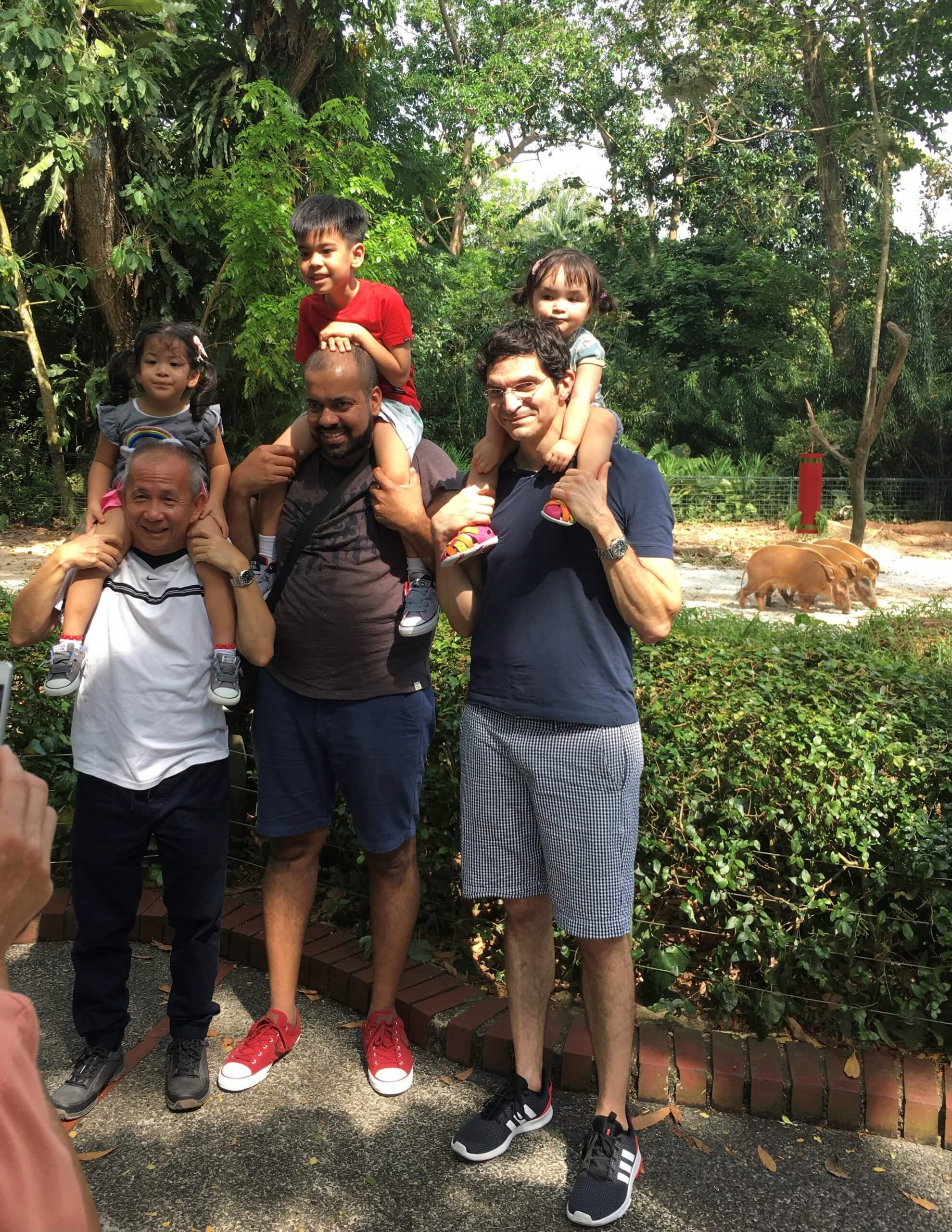
There was a time when I identified as a “backpacking Asian.” This was decades ago, when I was the only non-white person on a busload of Westerners on board the so-called “chicken buses” going across mountain passes and country borders. Or the only person not buckling under the weight of her Deuter haversack on the Trans-Siberian train.
Travel was my first love. I enjoyed being different and sharing my perspectives and experiences with curious 20-year-olds during their gap years — through the lens of a second-generation Singaporean of ethnic Chinese roots – until it was time to grow my own wings, as my Tiger mom would say. The realities of working life uprooted me from Asia and dropped me on the Old Continent.
Suddenly, being a racial minority became my permanent status. It wasn’t like I was booked on an easy flight home after two weeks of consuming my fair share of raclette, apfelschorle, and pizza di quattro stagioni.
Coming from Singapore — a land I fondly refer to as “Asia for Beginners” or the “Switzerland of Asia” — I learned the things I’d taken for granted as a racial majority: Being rejected for a job I was more than qualified for in a multicultural, English-speaking organization because I was not fluent in two other Western European languages. Or having to travel for hours to the nearest Asian restaurant only to find all its dishes doused in the same sweet and sour sauce. And perhaps the most memorable: Having to wait an extra five days each week for the only English-language periodical my local newsstand carried (The Economist) to reach my Italian town in Umbria.
For the most part, these were mere inconveniences and annoyances. And they did nothing to blunt my desire to see more of the world. Years later, I once again picked up and moved west — this time across the Atlantic to the New Continent.
In some ways, parts of America seemed more accepting of an Asian immigrant than what I’d experienced in Europe. So many more people looked like me on the subway and streets of New York. “Petite” is a real sizing option for people with smaller frames like mine. And the search for authentic Asian cuisine never takes long in the world’s largest cultural melting pot.
Yet other encounters remind me that I’m still “different.”
Like the time I recorded and re-recorded the voicemail greeting at my first job in New York nearly two dozen times — because I was conscious that some might not understand me since three people had asked me in my first week to repeat myself.
Or the time I invited some friends out for a meal on my birthday and insisted on footing the bill (a customary gesture in Asia), leading to some slight awkwardness.
And the time I struck up a conversation with a gentleman in his 70s who was alone at a charity walk and offered to take a photo of him. That led to a decade-long friendship before his memory of me faded as his dementia took hold.
What’s the Asian relevance, you might ask? It took my husband, a non-Asian, to point out to me that this friendship would have been very unlikely had I not been Asian. He was referring to the intrinsic interest in, and respect for, the older generation that is second nature among those in many Asian communities.
In recent years, I became a mother and for the first time started to consider race-related issues as they pertain to the world my child will grow up to live in. That, coupled with my personal experiences of going from racial majority to racial minority through my international relocations, has led me to three core principles that I believe many may find helpful as we collectively strive for a more racially harmonious society.
ONE: We have a lot more in common than we may realize.
The human hierarchy of needs doesn’t vary by boundary or culture. As a human race, we share in the responsibility to help others feel safe, belonged, respected and free – whether in our neighborhoods, schools, or workplaces.
TWO: Try everything once, no matter how foreign.
Foreign is a relative word. We all have “accents” when removed from our immediate home bases. The same goes for the foods we eat and our cultural habits. The more open we are to trying something outside our comfort zone, the wider our comfort zones will become.
THREE: When all else fails, look at a situation through the eyes of a child.
My daughter is half Chinese, half Euro-mix. Her best friend in pre-K is of a mixed Latinx-Slavic heritage. Their wider circle of friends includes kids with Black, Asian and Middle Eastern backgrounds. Every evening, I get a running monologue of the highs and lows of preschool life. Not only has race not been mentioned since she started school last fall, the focus is overwhelmingly on the goodness of each child and why he or she is a great school mate and friend.
I am humbled daily by the lessons I learn from this United Nations of little people.
We owe it to the next generation to leave behind a legacy they can build upon. A paraphrase of the national pledge of my birth country sums it up nicely:
“We . . . pledge ourselves as one united people, regardless of race, language or religion, to build a democratic society based on justice and equality so as to achieve happiness, prosperity and progress.”
We thrive on solving the toughest business and brand challenges. We’d love to discuss how we can help you ignite your spark.
hello@currentglobal.com